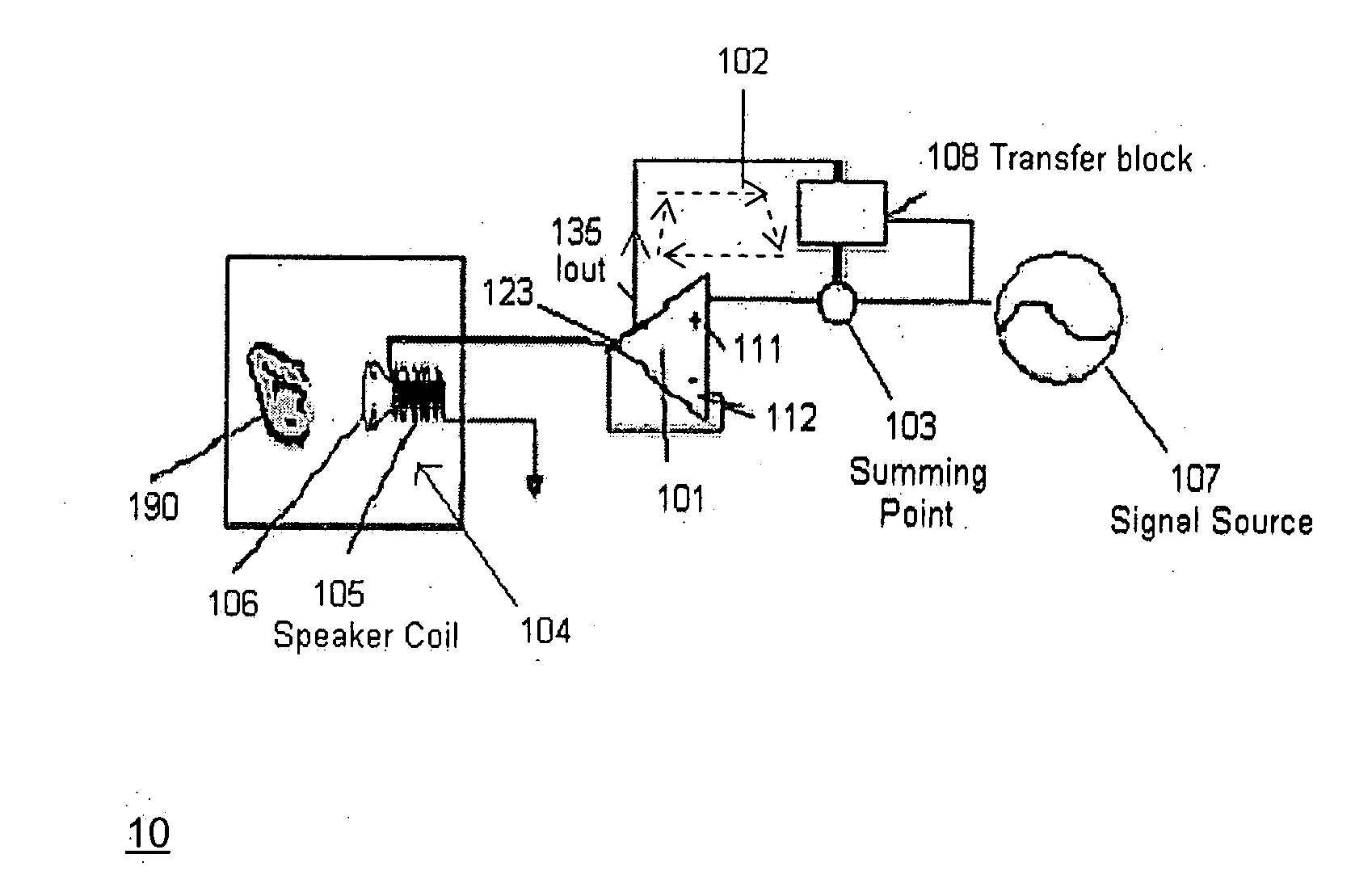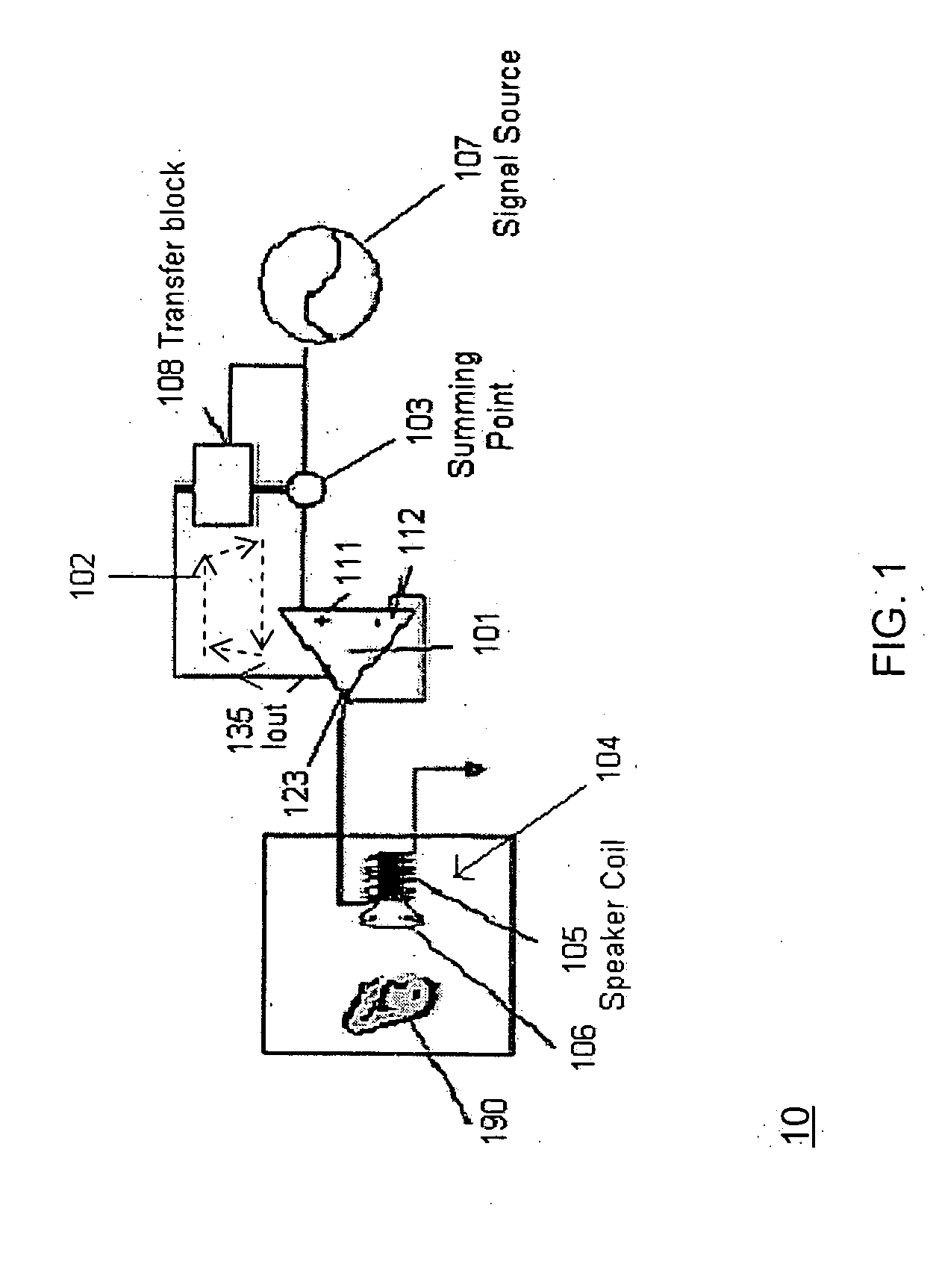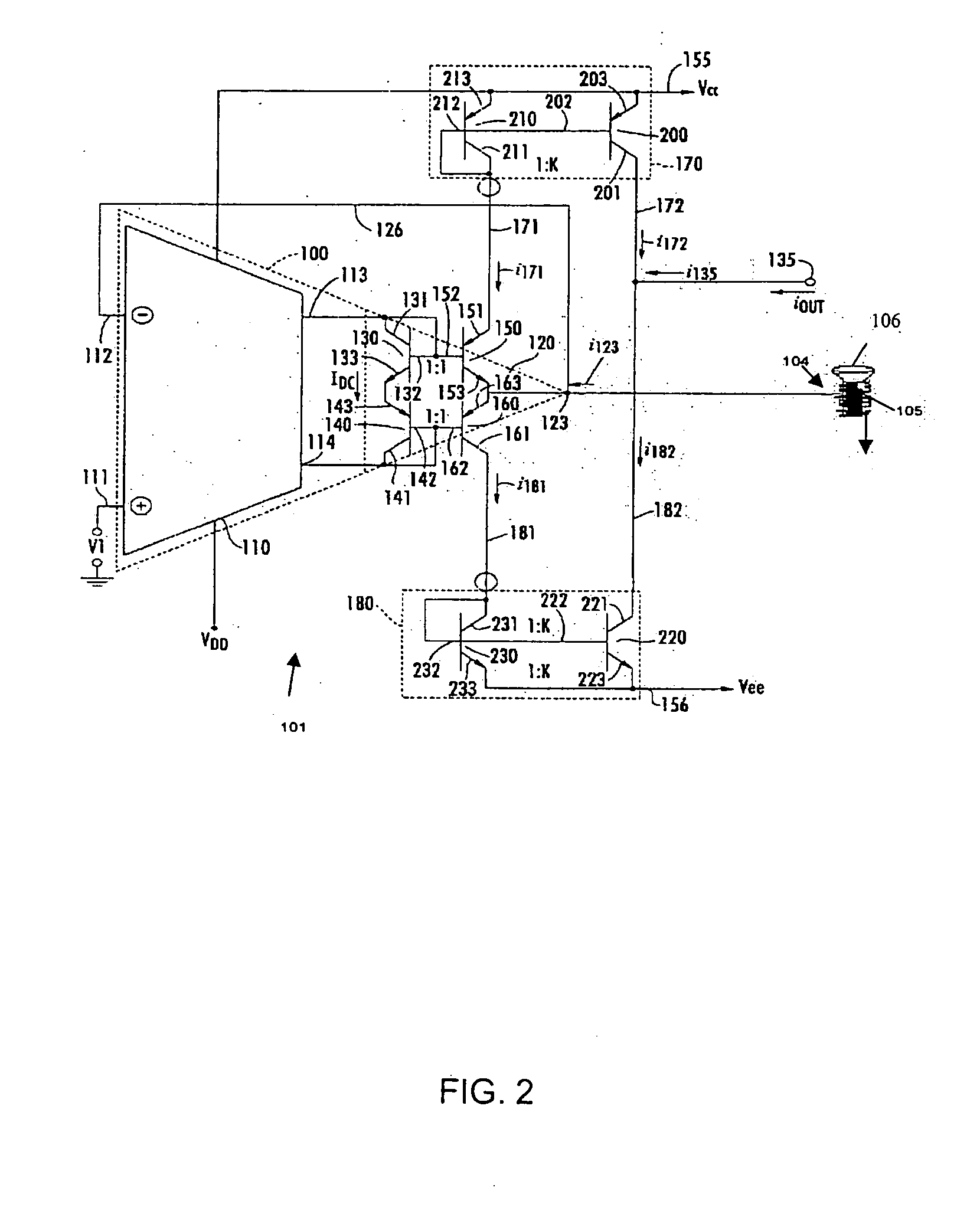Noise cancellation using virtually lossless sensing method
a lossless sensing and noise cancellation technology, applied in the direction of transducer details, electrical transducers, electrical apparatus, etc., can solve the problem of virtually lossless sensing of speaker current by the amplifier, and achieve the effect of virtually eliminating the noise in the vicinity of the ear/speaker, reducing the level of signal, and reducing the lossless sensing of speaker curren
- Summary
- Abstract
- Description
- Claims
- Application Information
AI Technical Summary
Benefits of technology
Problems solved by technology
Method used
Image
Examples
Embodiment Construction
[0016] Referring to FIG. 1, an embodiment of the invention is shown. An active noise cancellation system 10 includes a signal amplifier 101 and a speaker 104, such as a headphone speaker, which is driven by the amplifier 101. The amplifier 161 includes inverting input 112, non-inverting input 111, output 123, and sensed current output (IOUT) 135. Although amplifier 101 is shown in FIG. 1 configured as a unity gain buffer, the invention is in no way limited to this arrangement.
[0017] Amplifier 101 also senses the ambient induced noise current (along with the signal source current) in the speaker coil 105. Speaker 104 includes a speaker coil 105, and speaker magnet (not shown) mounted on a diaphragm 106 for generating sound waves detectable by the ear of a listener 190. The speaker 104 is disposed proximate to the ear of the listener 190 so that the noise waves reaching the speaker 104 and sensed by coil 105 are virtually the same the noise waves reaching the ear of the listener 190....
PUM
 Login to View More
Login to View More Abstract
Description
Claims
Application Information
 Login to View More
Login to View More - R&D
- Intellectual Property
- Life Sciences
- Materials
- Tech Scout
- Unparalleled Data Quality
- Higher Quality Content
- 60% Fewer Hallucinations
Browse by: Latest US Patents, China's latest patents, Technical Efficacy Thesaurus, Application Domain, Technology Topic, Popular Technical Reports.
© 2025 PatSnap. All rights reserved.Legal|Privacy policy|Modern Slavery Act Transparency Statement|Sitemap|About US| Contact US: help@patsnap.com



